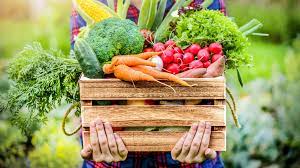
Focus on regenerating natural systems.
Is regenerative agriculture very different from organic agriculture, permaculture or other forms of sustainable agriculture?
Examples of Regenerative Agriculture Practices
- Working on cultivable land: by respecting the soil’s original structure, using adapted no-till techniques to protect micro-organisms and other earthworms, and trying as much as possible to keep soils covered to avoid erosion
- Fertilization: use organic matter and compost of local origin, as well as humus (dark organic matter), to improve the land’s fertility and to regulate the atmosphere’s humidity
- Biodiversity: use a variety of polycultures adapted to the soil and the local climate and responsibly handle their rotation and fallow
- Treatments: regenerative agriculture uses organic phytosanitary inputs that are exclusively natural and biodegradable, as little as possible. It also introduces the environment to complementary species to allow a greater ecological balance and offers better protection against pests
- Erosion control: regenerative agriculture uses hedgerows, filter dikes, and micro-dams to manage rainwater and groundwater maintenance.
Definition Of Regenerative Agriculture
Regenerative agriculture brings together a set of agricultural practices whose primary objective is to naturally enhance soil quality. In other words, to restore the fertility of diseased or exhausted soils. These practices are largely based on natural and ancient farming traditions around the world, but also on modern research and innovations in sustainable agriculture.
Regenerative agriculture is particularly useful in arid places where the soil was subject to excessive conventional agriculture. It also plays a significant role in the fight against global warming as it helps to retain and sequestrate CO2.
What do you think?